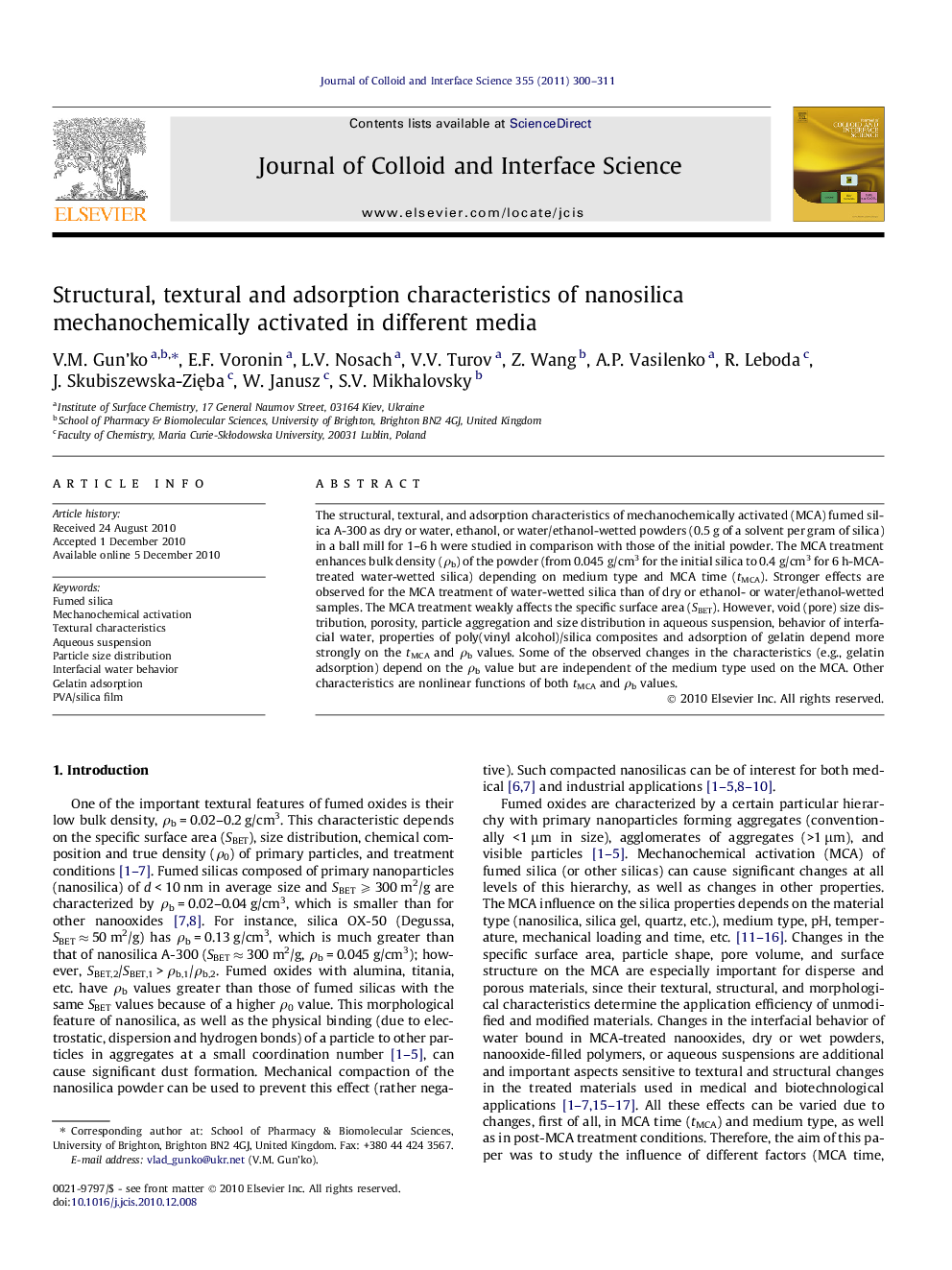| Article ID | Journal | Published Year | Pages | File Type |
|---|---|---|---|---|
| 609059 | Journal of Colloid and Interface Science | 2011 | 12 Pages |
The structural, textural, and adsorption characteristics of mechanochemically activated (MCA) fumed silica A-300 as dry or water, ethanol, or water/ethanol-wetted powders (0.5 g of a solvent per gram of silica) in a ball mill for 1–6 h were studied in comparison with those of the initial powder. The MCA treatment enhances bulk density (ρb) of the powder (from 0.045 g/cm3 for the initial silica to 0.4 g/cm3 for 6 h-MCA-treated water-wetted silica) depending on medium type and MCA time (tMCA). Stronger effects are observed for the MCA treatment of water-wetted silica than of dry or ethanol- or water/ethanol-wetted samples. The MCA treatment weakly affects the specific surface area (SBET). However, void (pore) size distribution, porosity, particle aggregation and size distribution in aqueous suspension, behavior of interfacial water, properties of poly(vinyl alcohol)/silica composites and adsorption of gelatin depend more strongly on the tMCA and ρb values. Some of the observed changes in the characteristics (e.g., gelatin adsorption) depend on the ρb value but are independent of the medium type used on the MCA. Other characteristics are nonlinear functions of both tMCA and ρb values.
Graphical abstractMechanochemical activation of nanosilica, compacting secondary particles, changes adsorption characteristics and bound water structure.Figure optionsDownload full-size imageDownload high-quality image (120 K)Download as PowerPoint slideResearch highlights► Mechanochemical activation of nanosilica. ► Compaction of nanoparticle aggregates changes textural porosity. ► Adsorption of water increases but adsorption of protein decreases. ► Free surface energy and fractality of treated wetted silica decrease.
